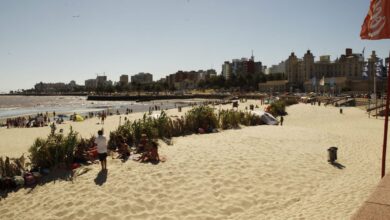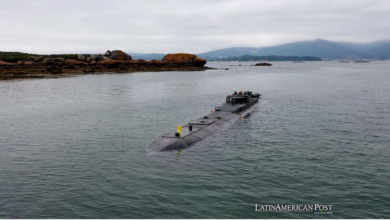Sargassum: What is Happening in the Caribbean with these Toxic Algae?
The Marine Ecosystem, the Economy and Tourism are the main Affected by the Massive Presence of These Macroalgae in the Caribbean

Photo: Pixabay
LatinAmerican Post | Brandon Martínez Salazar
Escucha este artículo
Leer en español: Sargazo ¿Qué está pasando en el Caribe con estas algas tóxicas?
For two months, the macroalgae known as Sargassum have put several Caribbean countries in trouble. This situation, which is considered a natural process in marine areas, has set off alarms, as current conditions exceed historical records that affect local populations and the tourism sector.
The problem with these toxic algae is that their large influx begins to damage ocean biodiversity, causing the death of fish and other sea species, the release of harmful gases and a huge footprint of dirt on the beaches, which negatively impacts the presence of tourists.
It is important to highlight how is the process of this organism in ecosystems and what can be done to overcome this situation in nations that are being strongly disadvantaged economically. We tell you what this phenomenon is about:
What is sargassum?
It is a macroalgae that is part of the Sargassum genus. This is part of the oceanic flora, especially in tropical and subtropical areas. However, according to the Ministry of the Environment and Natural Resources of Mexico, its function in the marine ecosystem is of vital importance, since it serves as a refuge and food for species of turtles, crabs, fish, shrimp, among others.
Likewise, its displacement towards different Caribbean beaches is a normal condition in its nature, but, the amount in which it has been presented lately, is not. That is where the problem lies.
We recommend you read: Food Waste, An Environmental Problem In Latin America
What makes the excessive presence of sargassum on beaches dangerous?
Since June, the quantities of these macroalgae have aroused strong concern in environmental organizations, as a strong impact has been felt, above all, in tourism and the economy of the communities.
Excessive amounts are considered a big problem because they are harmful in several aspects. One of them is that it reduces light and oxygen in the seas. In other words, its atypical presence ends up killing other marine species. Likewise, turtles are unable to reach the beaches to lay eggs.
On the other hand, coral growth is reduced to disproportionate levels. This occurs because the acidification of the sea allows toxic algae to reproduce in greater quantities, taking away land from other species. In the same way, sargassum causes great erosion on the beaches and, consequently, there is a strong loss of seagrass.
What is the current situation in the Caribbean due to Sargassum?
According to information from the Optical Oceanography Laboratory of the University of South Florida, by May, the presence of sargassum in Mexico and the Central Atlantic was 18.8 million tons, an extraordinary figure. However, that report for June exceeded historical indicators, reaching 24.2 million tons.
Places like Cancun, Florida, Barbados, Saint Lucia, the Dominican Republic and Belize are the most affected by the macroalgae. The issue has become worrisome because local authorities have not known how to handle it and, for the same reason, today those amounts awaken their negative effects in these regions.
Meanwhile, some Mexican researchers, aware of this matter, published in an article called "Potential uses of sargassum", a guide that promises to be the solution to the exorbitant amount of macroalgae in the Caribbean. In the text, they explain that the collection of this living being can be used for aquaculture, compost and the generation of biofuels. Although they warn that its treatment must be careful, since sargassum tends to accumulate toxic metals, which could be harmful if not used correctly.




